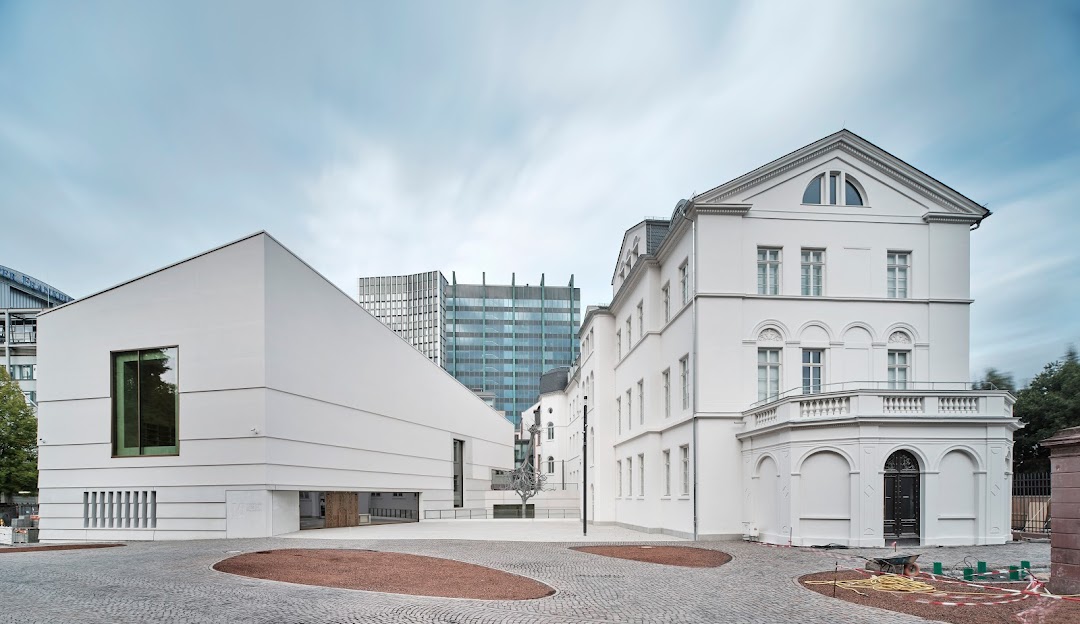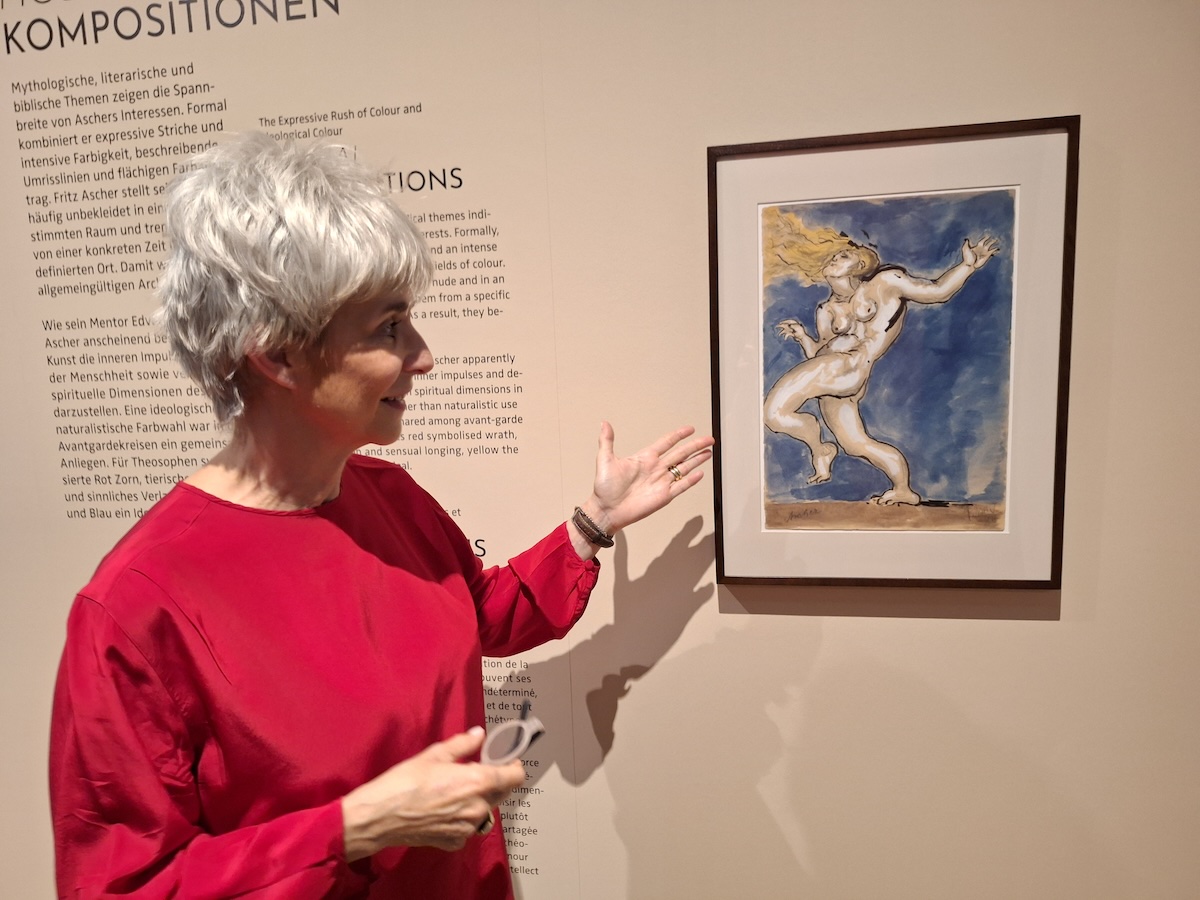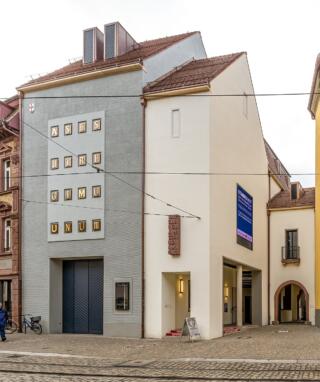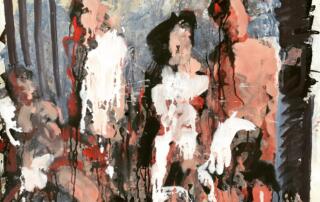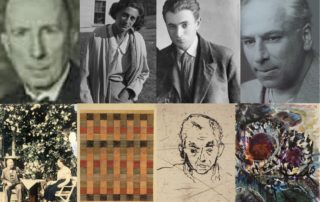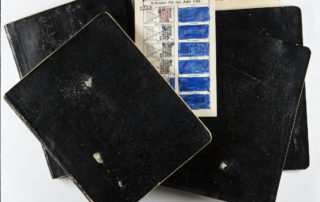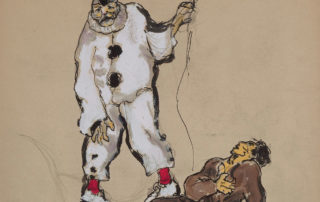Rachel Stern2024-12-18T14:18:11-05:00November 24th, 2024|Events, Lectures, Past Events|
In this book talk, Michael Lambek follows the intertwined history of Mies van der Rohe’s iconic Villa Tugendhat and the family who inhabited it from 1930-1938. Part memoir, part social history, the book traces the family from its origins in a Jewish ghetto to the present day, focussing on the author’s maternal grandmother, Grete Tugendhat who commissioned and championed the house, which is now a World Heritage Site in Brno, Czechia. Image above: Ludwig Mies van der Rohe, Villa Tugendhat, Brno (Czechia), photo David Zidlicky The Villa Tugendhat, designed by Mies van der Rohe in 1929, is an icon of architectural modernism in Brno, Czechia. It was also a family home. [...]
Rachel Stern2024-11-24T14:39:31-05:00October 28th, 2024|Events, Lectures, Past Events|
Der Maler, Grafiker und Dichter Fritz Ascher (1893-1970) wurde bereits als 16-Jähriger von Max Liebermann an die Akademie in Königsberg empfohlen. Ab 1913 gehörte er zu den gefragten Malern in Berlin. Er war ein genauer Beobachter seiner Zeit; die Urkatastrophe des Ersten Weltkriegs und die revolutionären Unruhen in Berlin führten ihn zu christlichen und mystischen Themen, die er radikal neu interpretierte. Nach 1933 erhielt Ascher als Jude Berufsverbot. Während der Pogrome am 9./10. November 1938 wurde er verhaftet und im Konzentrationslager Sachsenhausen und im Potsdamer Gestapo-Gefängnis interniert. Die Schoa überlebte er ab 1942 versteckt in einem Keller in Berlin-Grunewald. Während dieser einsamen Jahre verfasste er Gedichte. Als Künstler fand Ascher nach 1945 seinen ganz eigenen Stil. Angeregt vom nahe [...]
Rachel Stern2024-11-24T14:40:53-05:00October 22nd, 2024|Events, Lectures, Past Events|
Der spätexpressionistische Künstler Fritz Ascher (1893-1970) überlebte zwei Weltkriege und die Verfolgung durch das nationalsozialistische Regime. Als aufmerksamer Beobachter der Schrecken des Ersten Weltkriegs und der revolutionären Unruhen wandte er sich christlich-spirituellen Themen zu, die er radikal neu interpretierte. In intimen Zeichnungen beschäftigte er sich ab 1916 mit dem Thema Liebe und Verrat, sowohl in seiner Auseinandersetzung mit dem Kreuzigungsthema als auch mit der Figur des Bajazzo in der tragikomischen Oper „I Pagliacci“. Kurzvortrag und Führung von Rachel Stern zeigen den Künstler in seinem sozialen und politischen Umfeld. Image above: Fritz Ascher, Im Wald, um 1919. Weisse Gouache und schwarze Tusche über Aquarell und Bleistift auf Papier, 34 x 32,2 cm © Bianca Stock The late expressionist [...]
Rachel Stern2025-03-03T12:08:54-05:00August 12th, 2024|Exhibitions, Past Exhibitions|
The late Expressionist artist Fritz Ascher (1893-1970) survived two world wars and persecution by the National Socialist regime. A close observer of the horrors of World War I and revolutionary unrest, he turned to Christian spiritual themes, which he radically reinterpreted. In intimate drawings, he dealt with the theme of love and betrayal from 1916 onward, both in his exploration of the crucifixion theme and with the figure of Bajazzo in the tragicomic opera "I Pagliacci." Ascher's strong and unique artistic voice is evident not only in his artwork, but also in his poems. These were written when he was no longer allowed to work under National Socialism because of his Jewish roots and as a representative of modernism, [...]
Rachel Stern2024-09-20T07:15:28-04:00August 9th, 2024|Events, Lectures, Past Events|
Welcoming the Stranger, a collection of essays, explores hospitality and inclusion in Abrahamic traditions from historical, theoretical, theological, and practical perspectives. It offers an enlightening and compelling discussion of what the Abrahamic traditions teach us regarding welcoming people we don't know. Join the Center for Jewish Civilization and Mortara Center for International Studies for a conversation with editors Ori Soltes and Rachel Stern, refreshments, and a book signing. Image above: David Stern, Snow Crash (Lost Agency), 2018-19. Acrylics and pigments on paper, 27 x 35 inches. © David Stern / Artists Rights Society (ARS), New York This timely book offers theoretical and practical reflections on 'welcoming the stranger.' From the theological analysis of Abraham to the [...]
Rachel Stern2024-03-26T17:07:03-04:00February 4th, 2024|Events, Lectures, Past Events|
Join us for an evening of stimulating conversation, and refreshments, as we celebrate the publication of Welcoming the Stranger. Abrahamic Traditions and Its Contemporary Implications. Advance copies of the book are available for purchase. This book is a collection of thought-provoking essays exploring the theme of hospitality as a means of building bridges between different cultures and communities. This book is a must-read for anyone interested in interfaith dialogue, social justice, and creating a more inclusive society. Its contents could hardly be more relevant today. Beginning with the story of Abraham’s hospitality to the three strangers described in Genesis18, the narrative explores both the theological evolution in and beyond the Abrahamic traditions of the principle of “welcoming the stranger,” [...]
Rachel Stern2024-01-24T06:16:58-05:00December 22nd, 2023|Newsletter|
In 1901, the eight-year-old German-Jewish artist Fritz Ascher (Berlin, 1893-1970) drew mother and son negotiating the purchase of a Christmas tree. This is the first known artwork by the artist, which he sketched in graphite and then executed in ink on paper. Fritz Ascher, Winter Scene, 1901. Graphite and black ink on paper, 13.8 x 10.4 inches. Copyright Bianca Stock Find out more about Fritz Ascher in our short biographical film: WATCH "FRITZ ASCHER, EXPRESSIONIST (1893-1970)" Some years later, around 1913, Fritz Ascher draws a conductor on the verso of that same sheet of paper. The caricature shows Ascher’s tenderness and admiration: music, especially Beethoven’s music, accompanied him wherever [...]
Rachel Stern2022-11-02T01:09:36-04:00August 28th, 2022|Events, Lectures, Past Events|
Four selected life stories tell of survival strategies in war, flight and persecution - and of the consequences of the traumatic experiences for those affected. EVENT RECORDING FORTHCOMING Today we believe that flight, expulsion, oppression and murder which dominated Europe 70 years ago have been overcome. Recent events in Ukraine show us that this is not the case. And again there are countless individuals whose lives are uprooted and who have to reorient themselves. But what does that do to those affected, what does it do to artists and how do they reflect on this experience? With four selected biographies of Berliners, we recall the survival strategies they had to develop during the National Socialist [...]
Rachel Stern2022-04-28T09:33:15-04:00April 26th, 2022|Newsletter|
Dear Friends, Thursday is Yom HaShoah - Holocaust Memorial Day. In January, we invited you to actively commemorate victims of National Socialism by contributing to the Arolsen Archive’s digital memorial #EVERYNAMECOUNTS. I know that some of you found the project so meaningful that you are still donating your time to it. Right now, you can choose to enter data of documents from Buchenwald, Flossenbürg or Dachau: PARTICIPATE HERE This Thursday, I invite all to donate time to help build this important digital memorial. On our website you find further information about the project and our partnership with the Arolsen Archive: https://fritzaschersociety.org/digifas/everynamecounts/ And please share your experience with us! In May, we turn to the experience of [...]
Rachel Stern2022-03-28T05:26:02-04:00March 28th, 2022|Newsletter|
Dear Friends, When the artist Ben-Zion was born in 1897, his hometown Starokostiantyniv belonged to the Russian Empire. By the time he left for the United States, it belonged to the Ukraine/Poland. Today it again belongs to the Ukraine, and is brutally attacked and destroyed by the Russian army. As the casualties are mounting, we hope for peace, democracy and independence in the Ukraine. Join us on Wednesday, April 6 for a ZOOM LECTURE in our monthly series "Flight or Fight. stories of artists under repression” about the painter, printmaker, sculptor, educator, and poet: Wednesday, April 6, 12:00pm “Ben-Zion (1897-1987): Man of Many Faces” Featuring Tabita Shalem and Ori Z Soltes ) ZOOM EVENT REGISTRATION Ben-Zion, Prophet [...]
Rachel Stern2022-03-28T04:56:27-04:00March 1st, 2022|Newsletter|
Dear Friends, Join us TOMORROW for a ZOOM LECTURE in our monthly series "Flight or Fight. stories of artists under repression" about a recently re-discovered artist: Wednesday, March 2, 12:00pm EST: Jussuf Prince of Thebes – Re-constructing the life and work of a forgotten talent from Safed Featuring Dorothea Schöne, Berlin (Germany) ZOOM EVENT REGISTRATION Jussuf Abbo, Head of a Black Man, ca. 1939, plaster, painted, H: 28 cm. Estate of Jussuf Abbo, Brighton/UK, photo: Gunter Lepkowski Born in Safed, in the province of Beirut of the Ottoman Empire, the sculptor Joseph M. Abbo (1888–1953) – who later renamed himself Jussuf Abbo – came to Berlin in 1911 and began studying at the Royal Academy of [...]
Rachel Stern2022-03-11T08:13:14-05:00January 19th, 2022|Events, Past Events|
Pierrot, the famous character from the Italian commedia dell’arte, is set by the composer A. Schoenberg as the moonstruck and fantastical clown, who is a symbol for putting on a mask to hide one’s true feelings or opinions. Forever lovelorn and wistfully contemplating the dying moon, he lurches through the night, hiding his face underneath a thick layer of white paint. The extravagance of emotions, the aesthetic of exaggeration, and the distortion of communication through the mask turn Pierrot into an incredibly fascinating and universal figure. Pre-concert talk Rachel Stern, Director and CEO, The Fritz Ascher Society for Persecuted, Ostracized and Banned Art Stephen Decatur Smith, Stony Brook University, Department of Music Concert [...]



